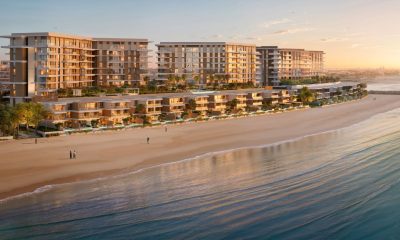Oman 2015
Development of Infrastructure
Tourism infrastructure developments like airport expansion, dedicated facilities for cruise ships, public transport facilities, integrated tourism complexes and hotels and resorts are expected to give the much-needed fillip to Oman’s tourism.

Tourism infrastructure developments like airport expansion, dedicated facilities for cruise ships, public transport facilities, integrated tourism complexes and hotels and resorts are expected to give the much-needed fillip to Oman’s tourism.
QUICK GLANCE
Several major tourism projects in the private sector are expected to greatly enhance the growth of the tourism sector.
The new Muscat International Airport is designed to handle 12 million passengers.
A new company Turathuna (our culture) has been formed to develop cultural landmarks and locations.
The move to issue 72-hour visas to passengers transiting through Oman is attracting more visitors.
Travel and tourism’s direct contribution to Oman’s gross domestic product (GDP) in 2014 was RO765.1 million.
Major focus on infrastructure development and tourism facilities are driving the growth of the sector in the country. Since tourism is considered as one of the key enablers in Oman’s diversification programme and job creation, it is getting a lot of attention from different agencies, especially the Ministry of Tourism. The government has devised both short-term and long-term plans, which are undertaken by the Ministry of Tourism in close coordination with various agencies like police, airlines and hotels. Tourism infrastructure developments like airport expansion, dedicated facilities for cruise ships, public transport facilities, integrated tourism complexes and hotels and resorts are expected to give the much-needed fillip to Oman’s ambitious plans to enhance tourism contribution in gross domestic product (GDP).
Several major tourism projects in the private sector, which are in different stages of development and planning, are also expected to greatly enhance the growth of the tourism sector in the Sultanate. These include integrated tourism complexes, such as the Salalah Beach project, which consists of three hotels and 700 rooms, 1,000 housing units, a marina, golf course and 186 serviced apartments. Further, the Saraya Bandar Jissah project in Muscat, comprising two hotels with a combined capacity of 326 rooms and Al Mouj (earlier known as The Wave, Muscat) project with four hotels, upscale residential units, 18-hole golf course and recreational facilities, a marina and a commercial centre are all expected to give the much needed push to tourism development.
The Mirbat Beach project is also in an advanced stage of completion. In the Wilayat of Sur, plans are afoot to build a high-end resort with hotels offering 600 rooms, residential units, shops and restaurants. Another large scale venture – Omagine Tourism Project – in Seeb is also reaching construction phase and will offer two hotels, residential units, a marina, shops and restaurants, along with recreational facilities.
Massive development of transport infrastructure facilities like expansion of airports and a pan-GCC railway network will drive tourism growth in Oman in the long-run. The expansion of Muscat international airport, after the recent completion of a similar work in Salalah, and two new regional airports are also expected to encourage and facilitate travel into and out of Oman. The new Muscat airport, which is extremely important for developing tourism in Oman, is designed to handle 12 million passengers, which can easily scaled up to 24 million, 36 million and even 48 million in different phases, depending on the growth of passengers. Presently, around 80 airlines operate from the Muscat airport. Oman Air is looking to expand in a big way in the coming years by increasing its fleet and adding more cities to its destinations.
Also, the plans to develop a pan-GCC railway network will facilitate travel between member countries, which is also a big step forward in encouraging tourism. Further, revamping public transport network in the country is partly aimed at attracting tourists, who find it difficult to commute. Plans are afoot to expand urban bus service, integrating different modes of public transport like bus, taxi and ferry services, separate taxi service for airport and hotels and regulate taxi fares, and develop ferry services like other developed cities. Heavy investments will also be made in the near future to expand Oman National Transport Corporation bus service. The state-owned transport firm has already placed firm orders for 40 low-floor buses to improve public transport system in Muscat and other cities.
The country is also developing its ancient forts and castles to attract tourists. A new company – Turathuna (our culture) – has been formed to develop cultural landmarks and locations. Turathuna, which is affiliated to Oman Tourism Development Company (Omran), will manage old regions of tourist attractions as well as forts and will work in close coordination with the ministries of tourism and heritage and culture.
Oman is also trying to attract medical tourists and the recent plans to develop an international medical city to provide state-of-the-art healthcare facility and organ transplant in Salalah are expected to encourage medical tourism in the long-run. Another factor that could push domestic tourism is a strong community involvement by adopting ideas and initiatives that can help the sector. Formation of additional institutes to train professionals needed in hospitality sector is important for a sustainable development as the country cannot rely on foreign workforce.
The Sultanate has a scope for attracting regional tourists and the initiatives to attract flow of tourists from the regional gained momentum with the recent easing of visa. For instance, a move to issue 72-hour visas to passengers transiting through Oman is attracting more visitors. This was implemented in close coordination with various agencies, including police, airlines and hotels. In the last couple of years, the Ministry of Tourism has conducted a series of road shows across the Gulf region in a move to promote Oman as a short-break tourism destination. This is all the more important for the Sultanate as many tourists in the region are constantly on the look-out for new yet cost-effective holiday destinations where they can spend quality time relaxing with family and friends. The country can boast of superior hospitality and tourism infrastructure, including cultural, beach and adventure tour options, excellent year-round weather, luxurious hotels and resorts, international cuisines, and world-class airports offering instant connectivity to the regional cities.
The country offers year-round sunshine that is particularly popular with visitors from Europe seeking a warm winter destination. The Sultanate also holds out great tourism destinations in terms of outstanding natural scenery, 3,165 kilometers of beaches, bays, islands, caves, sand dunes, mountains, plains, deserts and oases. Endowed with nature’s bounty, Oman is described as a dream destination and is gradually being unveiled in all its glory to the outside world now. In fact, an emphasis on archaeology, conservation and suitable climate distinguishes it from its immediate Gulf neighbours, which is a positive factor for the development of the sector. The Sultanate is also known for Unesco-recognised heritage sites, beaches, mountains, old markets and the royal opera house in Muscat. In the south, Salalah draws tourists from around the GCC from July to September, thanks to its pleasant climate.
Travel and tourism’s direct contribution to Oman’s gross domestic product (GDP) in 2014 was RO765.1 million (2.6 per cent of the total GDP). In fact, money spent by foreign visitors to a country is a key component of the direct contribution of travel and tourism. The contribution of tourism to the economy is expected to grow by 5.2 per cent per annum to RO1.453 billion (or 3.3 per cent of total GDP) until 2025.
The tourism sector employed 44,500 people directly (2.8 per cent of total employment) in 2014, which included employment by hotels, travel agents, airlines and other passenger transportation services. By 2025, international tourist arrivals are forecast to total 3.49 million, generating expenditure of RO1.56 billion, an increase of 7.1 per cent per annum.
A large number of private players are entering the field. For instance, as many as 310 licences were issued by the Ministry of Tourism for operating a variety of tourism facilities last year, showing a 1.6 per cent growth over 305 licences granted in the previous year. Of these permissions, 23 were issued for operating hotels, hotel apartments, resorts, and guest houses. Also, 136 licences were issued for establishing travel and tourism companies, such as travel agencies, tour operators, and other tourism related commercial ventures, indicating a growth of 41.7 per cent compared to 96 licences granted for such services in 2013. Also, the ministry started accepting applications for tourist licences online, as part of its efforts to attract investments in the Sultanate’s tourism sector through assisting the processing of licences.
As many as 18 new hotels with a combined room strength of 1,275 across the Sultanate were added to the existing facilities. Also, several leading hotel chains, along with their local partners, are in different stages of building new hotels in the country. At least sixteen to eighteen new hotels will come up in the next four years, taking the total number of rooms to more than 20,000.
One of the major beneficiaries of tourism development is hotels. But the total revenue of hotels in the 3 to 5 star categories for the first half of 2015 stood at RO90 million. Furthermore, the occupancy rate recorded a 7.3 per cent fall as it reached 62.7 per cent compared to 67.7 per cent for the same period of 2014. As many as 1.14 million tourists visited the Sultanate until the end of June, which included non-Omani Gulf visitors of 317,542 tourists. Indian visitors touched 131,341, which was followed by British visitors at 76,520, according to statistics released by National Centre for Statistics and Information.
Developing a vibrant tourism industry in Oman has several challenges, which include lack of many tourism attractions in interior places, lack of professionalism among tourist guides and public transport. In this scenario, drawing a tourism map on various attractions, rehabilitating places of tourist attraction with basic services, adopting strategies for tourism promotion and marketing of tourism projects within the country are of vital importance.
-

 Alamaliktistaad Magazines2 months ago
Alamaliktistaad Magazines2 months agoAlam Al Iktisaad – September 2025 Edition
-

 Magazines2 months ago
Magazines2 months agoOER – September 2025 Issue
-

 News2 months ago
News2 months agoKitchenomiKs Secures Investment of US$3.2M Led by Jasoor Ventures
-

 News2 months ago
News2 months agoOman Inaugurates ‘Hadatha’ – Its All-New Cybersecurity Center
-

 Banking & Finance2 months ago
Banking & Finance2 months agoOman Arab Bank Highlights Its Ongoing Strategic Initiatives and Future Plans
-

 News2 months ago
News2 months agoIEA Expects Global Oil Market to Remain Oversupplied in 2026
-

 Energy2 months ago
Energy2 months agoWLGA Middle East LPG Summit & Expo 2025 to be held at OCEC on November 10 and 11
-

 Real Estate2 months ago
Real Estate2 months agoAl Mouj Muscat Unveils Azura Beach Residences Phase 2: A New Chapter in Waterfront Living































You must be logged in to post a comment Login